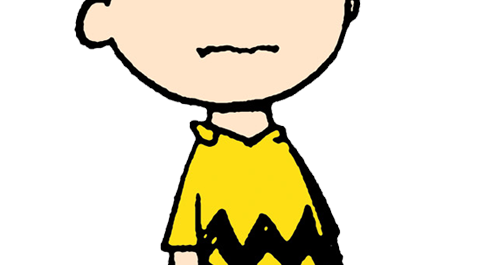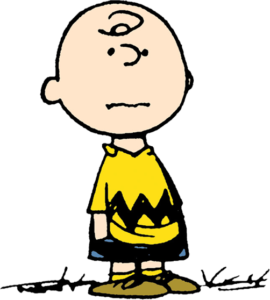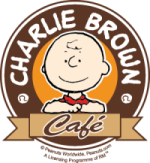
Peanuts Characters Series – Charlie Brown

CHARLIE BROWN
Whenever I feel really alone, I just sit and stare into the night sky. I’ve always thought hat one of those stars was my star, and at moments like this, I know that my star will always be there for me. Like a comforting voice saying, “Don’t give up, kid.”
To say that “Good ol’ Charlie Brown” holds a unique position in pop culture would be an understatement. He has the illustrious distinction of being the only Peanuts character to appear in both the first comic strip on October 2, 1950 and the last strip on February 13, 2000. Despite his less-than-stellar track record as a baseball manager, his inability to fly a kite or kick a football, through it all Charlie Brown never gives up. His eternal optimism gives us hope and that has made him undeniably relatable to readers all over the world.
“Everybody’s got a little piece of Charlie Brown in them,” observes Martino. “What’s great about him is that he operates on such an extreme level, which always makes you feel better about your and we’ve all had failures. He teaches us a wonderful thing in that in the midst of all that, you can pick yourself up and try again, so it was very important for us to capture that spirit in his expressions.”
As the team began the process of refining details for each of the characters’ looks, they turned their attention to one of Charlie Brown’s most defining features: his hair. Or lack thereof.
So just what exactly is the curlicue, loop-de-loop swirl that rests just above Charlie Brown’s forehead called? “I just call it his hair,” says Martino with a smile. “But what little hair he has in that loop is full or personality,” continues the director. “ The way Schulz drew his hair would echo Charlie Brown’s emotions. It would move and reinforce his own expressions.”
According to Charlie Brown’s stylist – aka fur supervisor – Jon Campbell, 219 strands of hair were created for his iconic swirl/loop/curl.
“All of his hairs are wound up into a bundle,” explains Campbell. “We knew we could not just give Charlie Brown a single hair. No matter how the hair is rendered, it would only be a pixel wide, so that is why bundled a large number of hairs that we squeezed, straightened and relaxed just right to basically reproduce the ebb and flow of Schulz’s pen line.”
Because Schulz drew the hair loop differently each time, Campbell knew he needed to provide the animators with enough flexibility to achieve the desired results. “If we were to take a hair and groom it into a curve, it will basically be stuck in that position,” he explains. “So instead of grooming his hair into a loop-de-loop, we groomed it straight out, like a unicorn, and rigged it, allowing the animators to control it.” Campbell compares Charlie Brown’s hair rig to that of a spring coil: “You have no idea how long a spring actually is until you uncoil it,” he says. “Proportionally, when uncoiled, Charlie Brown’s hair is nearly two feet long!”
In a nod to the spring coil reference, Martino cites a very subtle Easter egg (an oblique reference or in-joke) in the film: “The wire sculpture that Charlie Brown makes by mistake looks exactly like his hair loop.”
Buy Charlie Brown at
http://www.charliebrowncafesg.com/product/charlie-brown-plush-toy-45cm/

0 Comments
Write a Comment